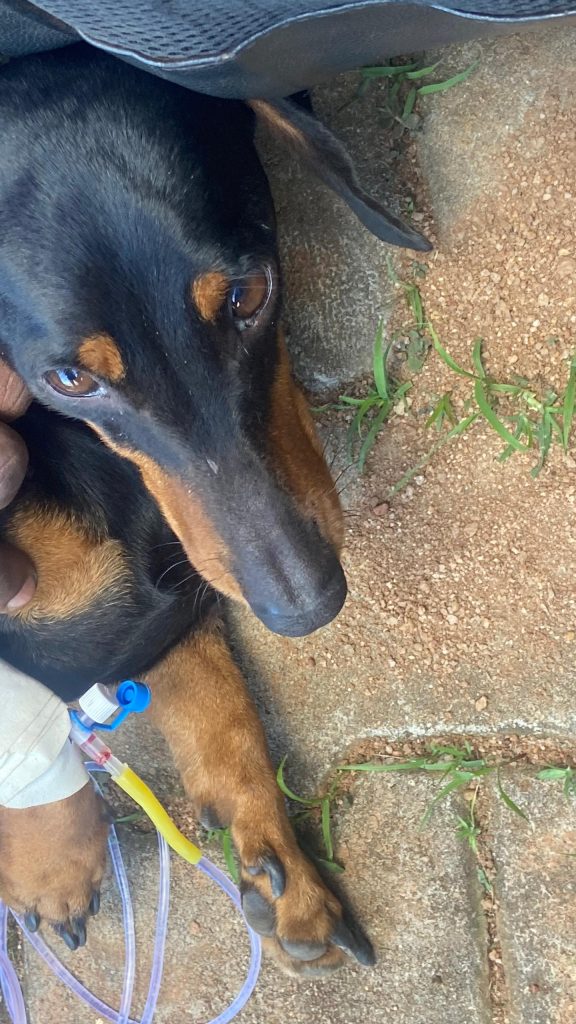
Nala (name changed for confidentiality), a 7-year-old female dachshund, was presented with a progressive reduction in appetite and reluctance to move. The owner reported that she preferred to lie down most of the time and showed diminishing activity levels as the day progressed. Her overall energy appeared to decline gradually, with noticeable lethargy and inactivity increasing by the hour.
Clinical examination findings
On physical examination, the patient exhibited a fair to good body condition score (BCS 3.5/5), with a smooth and shiny coat indicative of general nutritional adequacy. However, notable abnormalities included congested pink conjunctiva, hyperventilation, and lethargy. The rectal temperature was mildly elevated at 38.1℃, and increased abdominal contractions were observed, suggestive of potential abdominal discomfort or systemic involvement. In response to these findings, a whole blood sample was collected for further laboratory analysis to aid in diagnosis and guide appropriate treatment.
Laboratory results indicated a developing bacterial infection, reflected by changes in white blood cell counts. Red blood cell levels remained normal, showing no signs of anaemia or blood loss at this stage.
Diagnosis
Following a thorough clinical and laboratory evaluation, Nala was tentatively diagnosed with concurrent bacteremia and hypobicarbonatemia. The metabolic imbalance was likely a secondary development resulting from the underlying bacteremia. The Bacteremia appeared to have been progressing silently over time, with subtle signs preceding the clinical presentation. Although findings supported the diagnosis, the precise cause of the bacteremia could not be definitively identified at the time of assessment. Nala was started on a three-day course of treatment that saw her improve. On the third day, Nala was pronounced recovered from this condition.
Discussion
Hypobicarbonatemia refers to a lower-than-normal concentration of bicarbonate (HCO₃⁻) in the blood. Bicarbonate plays a crucial role as a buffer, helping to maintain the body’s acid-base balance (pH). When bicarbonate levels drop significantly, the blood becomes more acidic, a state known as metabolic acidosis.
It is important to note that hypobicarbonatemia is not a disease itself, but rather a clinical indicator of an underlying pathological process that requires prompt evaluation and treatment. If left unaddressed, severe acidosis can compromise vital organ function and may lead organ failure or death.
In dogs, hypobicarbonatemia is commonly caused by conditions that either increase acid production or lead to bicarbonate loss. These include severe diarrhoea, renal disease, diabetic ketoacidosis, and lactic acidosis, often secondary to shock or sepsis. Other causes include toxin ingestion (e.g., ethylene glycol/antifreeze) and Addison’s disease (hypoadrenocorticism).
Conclusion
In Nala’s case, hypobicarbonatemia was suspected to be the result of lactic acidosis secondary to sepsis, as suggested by both clinical presentation and laboratory findings. This highlights the importance of identifying and treating the primary cause to restore metabolic stability.


